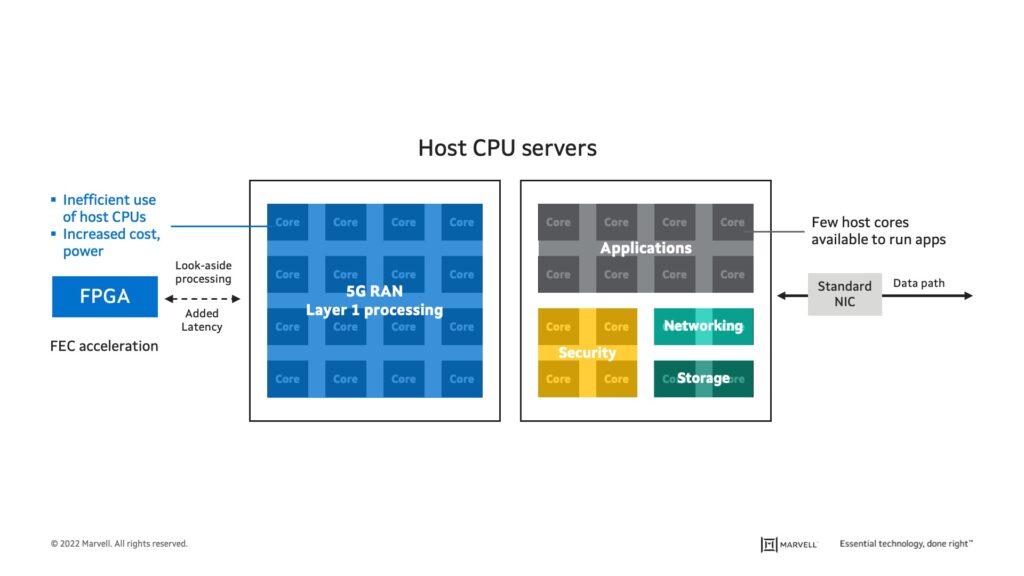- 製品
- 会社概要
- サポート
- 製品
- タイプ別
- 市場別
コンピューティング
ネットワーキング
- 車載機器
- コヒーレントDSP
- Data Center Switches
- Enterprise Switches
- DCI光モジュール
- イーサネットコントローラ
- イーサネット PHY
- リニアドライバー
- PAM DSP
- PCIeリタイマー
- トランスインピーダンスアンプ
ストレージ
カスタム
- 会社概要
Posts Tagged 'SmartNICs hardware accelerators'
-
妥協のない5GオープンRAN: コンピュート・アーキテクチャ
By Peter Carson, Senior Director Solutions Marketing, Marvell
はじめに
5G networks are evolving to a cloud-native architecture with Open RAN at the center. This explainer series is aimed at de-mystifying the challenges and complexity in scaling these emerging open and virtualized radio access networks. Let’s start with the compute architecture.
The Problem
Open RAN systems based on legacy compute architectures utilize an excessively high number of CPU cores and energy to support 5G Layer 1 (L1) and other data-centric processing, like security, networking and storage virtualization. As illustrated in the diagram below, this leaves very few host compute resources available for the tasks the server was originally designed to support. These systems typically offload a small subset of 5G L1 functions, such as forward error correction (FEC), from the host to an external FPGA-based accelerator but execute the processing offline. This kind of look-aside (offline) processing of time-critical L1 functions outside the data path adds latency that degrades system performance.

Image: Limitations of Open RAN systems based on general purpose processors
最新の記事
アーカイブス
カテゴリ
- 5G (12)
- AI (18)
- 車載機器 (26)
- Cloud (9)
- コヒーレントDSP (2)
- Company News (101)
- Custom Silicon Solutions (2)
- Data Center (41)
- データ処理ユニット (22)
- エンタープライズ (25)
- ESG (6)
- イーサネット・アダプター、コントローラー (12)
- イーサネット PHY (4)
- Ethernet Switching (35)
- ファイバーチャネル (10)
- Marvell Government Solutions (2)
- ネットワーク (31)
- Optical Modules (9)
- Security (5)
- Server Connectivity (20)
- SSD コントローラ (6)
- ストレージ (22)
- ストレージの推進者 (2)
- What Makes Marvell (26)
会社情報
リクルーティング情報
表示言語 (Language)
Copyright © 2024 Marvell, All Rights Reserved
- 利用規約
- プライバシーポリシー
- お問い合わせ先

